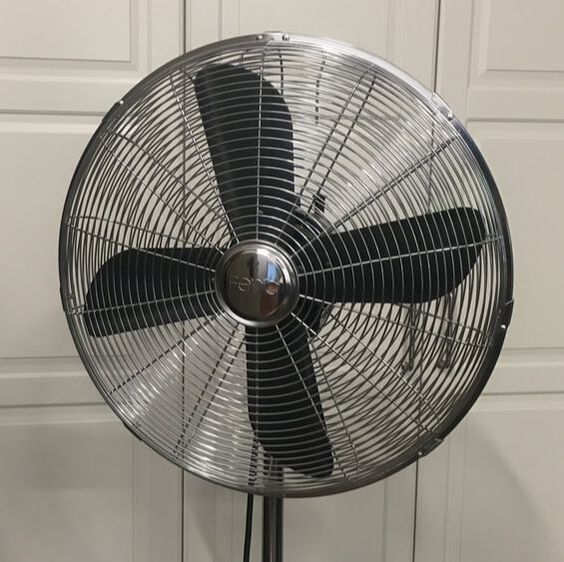Author: CLIVE BLANCHARDClive is an expert on achieving home energy efficiency at low cost so you can save money in comfort. Archives
July 2024
Categories |
Back to Blog
Our house is too hot, what can I do?18/2/2024  In my last post (Wondering why you have trouble sleeping lately?) I promised I would write about creating a heat refuge (sometimes called a cool refuge) in your home for those exceptional hot nights where it doesn’t cool down enough to sleep. Given that more hot weather is forecast, I thought I would finish it early to give you a chance to at least take the first steps. With summer nighttime minimum temperatures increasing even faster than daytime temperatures creating a home heat refuge is desirable in much of Australia, especially during extreme weather conditions. The recent power blackouts in Victoria show that even if you have ducted air conditioning, when the grid goes down, unless your house is well insulated, the inside temperature can rise quickly to dangerous temperatures. Ideally you would upgrade your whole house, using a Residential Efficiency Scorecard or an EnerPHit Passive House assessment for guidance. As an alternative, when doing a Scorecard or EnerPHit assessment I can at no extra cost help you identify a room to serve as a home heat refuge, which in cold weather can double as a cold refuge as many improvements will target both. This is a lot cheaper than upgrading your whole house. Even if you can’t afford that, the following low-cost ideas could get you started to create a refuge in one room to make your life safer and more comfortable during heatwaves: Most of them will also double for protecting you from cold snaps in winter. These ideas should be read in conjunction with Wondering why you have trouble sleeping lately? Choosing the room to be your heat refuge:This should ideally be a room that:
Insulation and Sealing:
Window Shading and Curtains
Cooling Systems:
General:
Remember that creating a heat refuge is not only about physical comfort but also about protecting your health. If your home lacks proper cooling, consider finding local facilities (such as shopping centres, libraries or swimming pools) that can serve as cooling refuges during extreme heatwaves. Stay safe and take care! To keep informed of my latest posts, sign up for the Energy Saving Newsletter and as a free bonus, get a 14 page extract from the forthcoming second edition of the book: 'House Taming, How to reduce greenhouse gases in comfort' Sign up now to the Energy Saving Newsletter. If you need personalised advice or you are thinking on spending some real money on the refuge, get an energy audit. I guarantee I can cost effectively save you the cost of the audit. Feel free to leave a comment or question below.
0 Comments
Read More
Back to Blog
It might not just be you. In Adelaide the Bureau of Meteorology forecast overnight minima for March to May is for a 76% chance that it is above the historical median and 38% chance of it being unusually warm. Sarah Perkins-Kirkpatrick from the University of NSW says that since the mid 50”s overnight minima have been rising faster than daytime maxima. What this means is that in most of southern Australia and in particular the Adelaide plains, the number of nights that the temperature outside doesn’t drop to sleep temperatures has increased and is likely to continue to increase. This also means your house doesn’t cool down overnight and if the next day is also hot, the house continues to get even hotter. So, what should you do if it is a stinking hot night? If you have an air conditioner, make sure it is performing as well as possible, see Help, my air conditioner isn't performing! Tips for sleeping:
To keep informed of my latest posts, sign up for the Energy Saving Newsletter and as a free bonus, get a 14 page extract from the forthcoming second edition of the book: 'House Taming, How to reduce greenhouse gases in comfort' Sign up now to the Energy Saving Newsletter. If you need personalised advice or you are thinking on spending some real money on the refuge, get an energy audit. I guarantee I can cost effectively save you the cost of the audit. Feel free to leave a comment or question below. |
- Home
- Energy Audits
- Scorecard
- New homes
- Passive House
- FAQ Passive House/EnerPHit
- Low cost savings blog
- Save Newsletter
- Architect/builder services
- FAQ 7-Star
- NCC Newsletter
- NCC 2022 Blog
- Greenhouse gases
- Why us
- Contact
- NCC Signed up
- Save Signed up
- Solar
- Gift Cards
- Enquiry thanks
- Sell a home
- Needs Survey
- Home
- Energy Audits
- Scorecard
- New homes
- Passive House
- FAQ Passive House/EnerPHit
- Low cost savings blog
- Save Newsletter
- Architect/builder services
- FAQ 7-Star
- NCC Newsletter
- NCC 2022 Blog
- Greenhouse gases
- Why us
- Contact
- NCC Signed up
- Save Signed up
- Solar
- Gift Cards
- Enquiry thanks
- Sell a home
- Needs Survey
- Home
- Energy Audits
- Scorecard
- New homes
- Passive House
- FAQ Passive House/EnerPHit
- Low cost savings blog
- Save Newsletter
- Architect/builder services
- FAQ 7-Star
- NCC Newsletter
- NCC 2022 Blog
- Greenhouse gases
- Why us
- Contact
- NCC Signed up
- Save Signed up
- Solar
- Gift Cards
- Enquiry thanks
- Sell a home
- Needs Survey
|
About Your Low Energy Home
At Your Low energy home our mission is to help you reduce greenhouse gases and running costs of your home. This applies to: Our primary goal is to help people make the most cost-effective decisions to reduce greenhouse gas emissions. Our objective is to work with you to achieve your goals at the level of expenditure which is comfortable for you. This can be achieved while increasing comfort and amenity. |
|

 RSS Feed
RSS Feed
